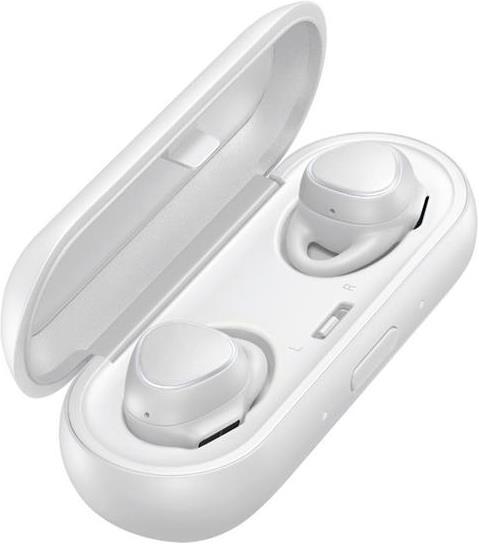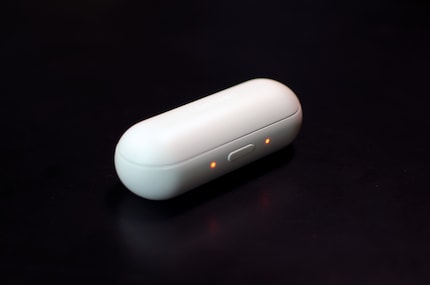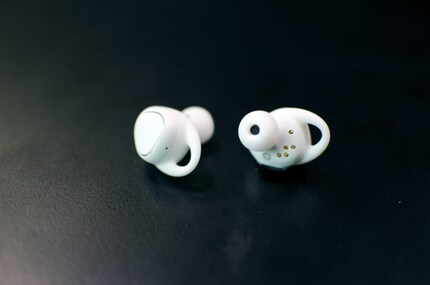

Samsung Gear IconX 2016 - The importance of fit
Truly wireless and truly great? The Korean electronics manufacturer Samsung is currently advertising its first wireless in-ear headphones. But the test shows: The Samsung Gear IconX are tricky beasts.
The wireless ones are coming. Now for sure. Just a few months ago, the devices were still a topic of conversation among obscure tech nerds, but today they can be found prominently in advertising displays at well-known electronics retailers. To touch. Trying them on is difficult as they are small. This means that the risk of theft is probably a little too high for most shops. They also have to be paired with a device, which is often almost impossible without operating instructions.

Luckily, this restriction does not exist for your trusted editor and I have been among the users of the latest technology from Samsung over the past few days. Tested today: the Gear IconX.
Beautiful design and clean fit
For once, my headphones are white. Otherwise they were always black. The Samsung Gear IconX are also available in black and blue. It quickly becomes clear that Samsung is not only focussing on audio, but also on design. With an eye-catching rubber headband, the Samsung Gear IconX do not look like the usual models, which are essentially identical to wired headphones. The only difference is that they have an integrated user interface. This is not visible on the IconX, as they rely on a kind of touch-sensitive interface. However, there is a black surface that shines red light onto the thin skin of the ear when in use - just like a Fitbit or similar fitness trackers do.

Like all in-ear earbuds tested so far, which do away with cables entirely, the Samsung Gear IconX come in a charging case. The small case is also white but round except for a small footprint. That makes quite an impression.
The shape of the charging case requires a little care when using it, because if the case tips over, it rolls at least 20cm. This can often be enough to cause it to fall off a table or shelf. The case is also inefficiently large, so it no longer fits as easily in every trouser pocket as the case of the Jabra Elite Sport. It has to be a jacket pocket.
Quiet and rattling
The funny-looking earpieces at the top of the IconX headphones make it virtually impossible for the headphones to fall out of the ear. They are also very comfortable, even though I thought that the tracking insert with the light might put some pressure on the ear. But it doesn't. I don't know whether this will be the case for you, because every ear is built differently. In terms of identification features, ears are probably on the same level as fingerprints. Therefore, when I say that the Gear IconX are comfortable, that's true for me, but not necessarily for you.

What I didn't think about were the attachments for the parts that go into the ear. It's not just the earpieces that anchor the whole device in the ear that can be replaced, but also the parts that separate the outside world from the world of sound. As the earplugs fit so well in the ear, I forgot that I could also replace them. So during the first test phase, everything sounded as if I was listening to music with the headphones from the Walkman tape players from the 1980s held slightly away from my ear.
However, even after the customisation, the music quality wasn't really good. Even with a perfect fit, the bass sounds flat and tinny in places and the high tones are a bit muddy. As bad as this may sound, the Samsung Gear IconX are not a disaster. All in all, I would call them solidly average.
The main problem is not the sound quality but the volume. The Gear IconX are simply too quiet. No matter how high I set the volume on the headphones and in the Bluetooth settings - the two can be set independently of each other - I could never completely block out the outside world. However, this is not due to the effective volume of the earbuds, but to the fact that noise cancelling - the new German term for blocking out ambient noise - is either very weak or non-existent.
Battery gives up, but Bluetooth doesn't
Interesting, however, is the performance of the earbuds. The Bluetooth connection manages almost without failures. Almost. In my music-free zone at Turbinenplatz, the signal drops out only rarely and then only for about a tenth of a second. Turbinenplatz is an interesting test area for Bluetooth headphones because the signal regularly drops out there. Without walls for the Bluetooth signal to bounce off and hit the receiver, the field is very weak. However, the Gear IconX manages the field almost without fail.

However, the battery power is weak. These are the first Bluetooth headphones that have failed me for battery reasons. I listened to music for about an hour and then I was done. That's okay for occasional cardio training, but if you're a marathon runner or have a long train journey ahead of you - from Zurich to Bern, perhaps - then it becomes critical. As you can't listen to music and charge the earbuds at the same time, you simply have to stop until the earbuds are charged again.
Samsung, you loner
That's twice as bad in the fitness centre. I don't know about you, but when I'm doing cardio, I have no patience for the world around me. With the exception of a major fire, I want to block everything out during endurance training. If I can hear the man next to me panting, then that's officially too stupid for me.
Samsung is also apparently too stupid to even make an effort to adhere to the frameworks provided. But in the meantime, it's just childish if I can't connect my data collected by Samsung with other apps. Because that's exactly the problem with Android. Too many cooks spoiling the broth. No, not only do they spoil the broth, they also add to the broth of other cooks. There's no other way to explain the stupid non-synchronisation between Google Fit and S Health. Somewhere along the line, Samsung thinks "Google are stupid", makes its own app that does exactly the same thing as Google's app and then makes sure that the apps will never communicate with each other.
Come on, you're both billion-dollar companies. Does it hurt you so much when your data talks to other data? Especially because it's my data and I'd like to have a say in how my data goes where. Honestly, you're both totally wrong. I hope your decision-makers are stepping on a Lego brick.
Furthermore, the headphones are a pain in the arse on the software side, as the installation requires the separate installation of two apps. Instead of Android Wear, Samsung Gear has to be installed on my mobile phone and S Health instead of Google Fit. S Health offers a myriad of sports that can be tracked, but I really don't want to set up two apps, enter my data twice and then check it twice. I really don't. Sure, it's not a lot of work and it's lazy, but if Samsung and Google can be childish, then so can I.
Okay, of course I tested it, because otherwise you commentators would rightly tear me apart. But my verdict on the app confusion is just a shrug of the shoulders, which is why I'm only writing two sentences about it.
So average, just
The Samsung Gear IconX have a great shape and not only sit firmly but also comfortably. The design is therefore a hit. The shortcomings are not only to be found on the software side, but also in the volume and the inadequate sound insulation from the outside.
I'm sure Samsung can do better. I'm also sure that the successors to the IconX have the potential to take the wind out of the sails of all other truly wireless headphones. But the current generation can't do it, even if the price is more than worth fighting for.
You might also be interested in this
Journalist. Author. Hacker. A storyteller searching for boundaries, secrets and taboos – putting the world to paper. Not because I can but because I can’t not.
